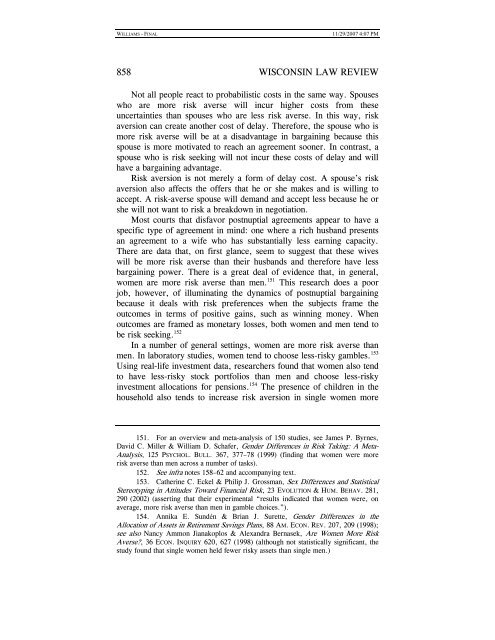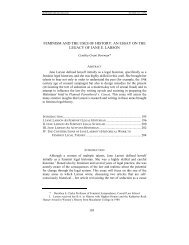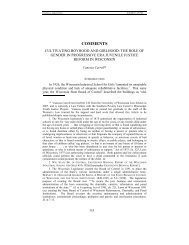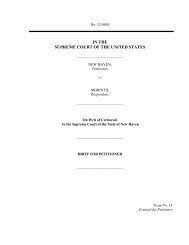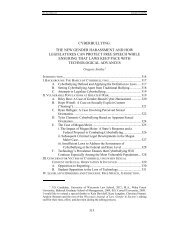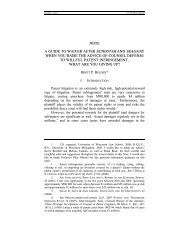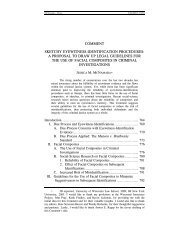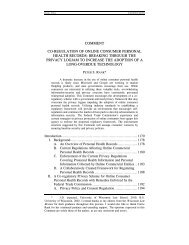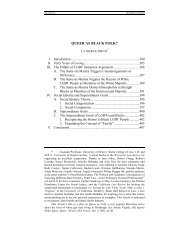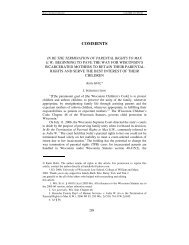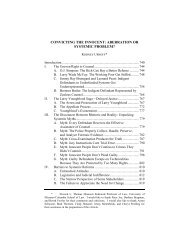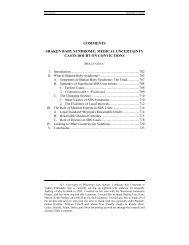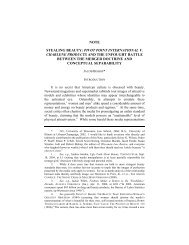POSTNUPTIAL AGREEMENTS - UW Law School
POSTNUPTIAL AGREEMENTS - UW Law School
POSTNUPTIAL AGREEMENTS - UW Law School
Create successful ePaper yourself
Turn your PDF publications into a flip-book with our unique Google optimized e-Paper software.
WILLIAMS - FINAL 11/29/2007 4:07 PM<br />
858 WISCONSIN LAW REVIEW<br />
Not all people react to probabilistic costs in the same way. Spouses<br />
who are more risk averse will incur higher costs from these<br />
uncertainties than spouses who are less risk averse. In this way, risk<br />
aversion can create another cost of delay. Therefore, the spouse who is<br />
more risk averse will be at a disadvantage in bargaining because this<br />
spouse is more motivated to reach an agreement sooner. In contrast, a<br />
spouse who is risk seeking will not incur these costs of delay and will<br />
have a bargaining advantage.<br />
Risk aversion is not merely a form of delay cost. A spouse’s risk<br />
aversion also affects the offers that he or she makes and is willing to<br />
accept. A risk-averse spouse will demand and accept less because he or<br />
she will not want to risk a breakdown in negotiation.<br />
Most courts that disfavor postnuptial agreements appear to have a<br />
specific type of agreement in mind: one where a rich husband presents<br />
an agreement to a wife who has substantially less earning capacity.<br />
There are data that, on first glance, seem to suggest that these wives<br />
will be more risk averse than their husbands and therefore have less<br />
bargaining power. There is a great deal of evidence that, in general,<br />
women are more risk averse than men. 151 This research does a poor<br />
job, however, of illuminating the dynamics of postnuptial bargaining<br />
because it deals with risk preferences when the subjects frame the<br />
outcomes in terms of positive gains, such as winning money. When<br />
outcomes are framed as monetary losses, both women and men tend to<br />
be risk seeking. 152<br />
In a number of general settings, women are more risk averse than<br />
men. In laboratory studies, women tend to choose less-risky gambles. 153<br />
Using real-life investment data, researchers found that women also tend<br />
to have less-risky stock portfolios than men and choose less-risky<br />
investment allocations for pensions. 154 The presence of children in the<br />
household also tends to increase risk aversion in single women more<br />
151. For an overview and meta-analysis of 150 studies, see James P. Byrnes,<br />
David C. Miller & William D. Schafer, Gender Differences in Risk Taking: A Meta-<br />
Analysis, 125 PSYCHOL. BULL. 367, 377–78 (1999) (finding that women were more<br />
risk averse than men across a number of tasks).<br />
152. See infra notes 158–62 and accompanying text.<br />
153. Catherine C. Eckel & Philip J. Grossman, Sex Differences and Statistical<br />
Stereotyping in Attitudes Toward Financial Risk, 23 EVOLUTION & HUM. BEHAV. 281,<br />
290 (2002) (asserting that their experimental “results indicated that women were, on<br />
average, more risk averse than men in gamble choices.”).<br />
154. Annika E. Sundén & Brian J. Surette, Gender Differences in the<br />
Allocation of Assets in Retirement Savings Plans, 88 AM. ECON. REV. 207, 209 (1998);<br />
see also Nancy Ammon Jianakoplos & Alexandra Bernasek, Are Women More Risk<br />
Averse?, 36 ECON. INQUIRY 620, 627 (1998) (although not statistically significant, the<br />
study found that single women held fewer risky assets than single men.)


